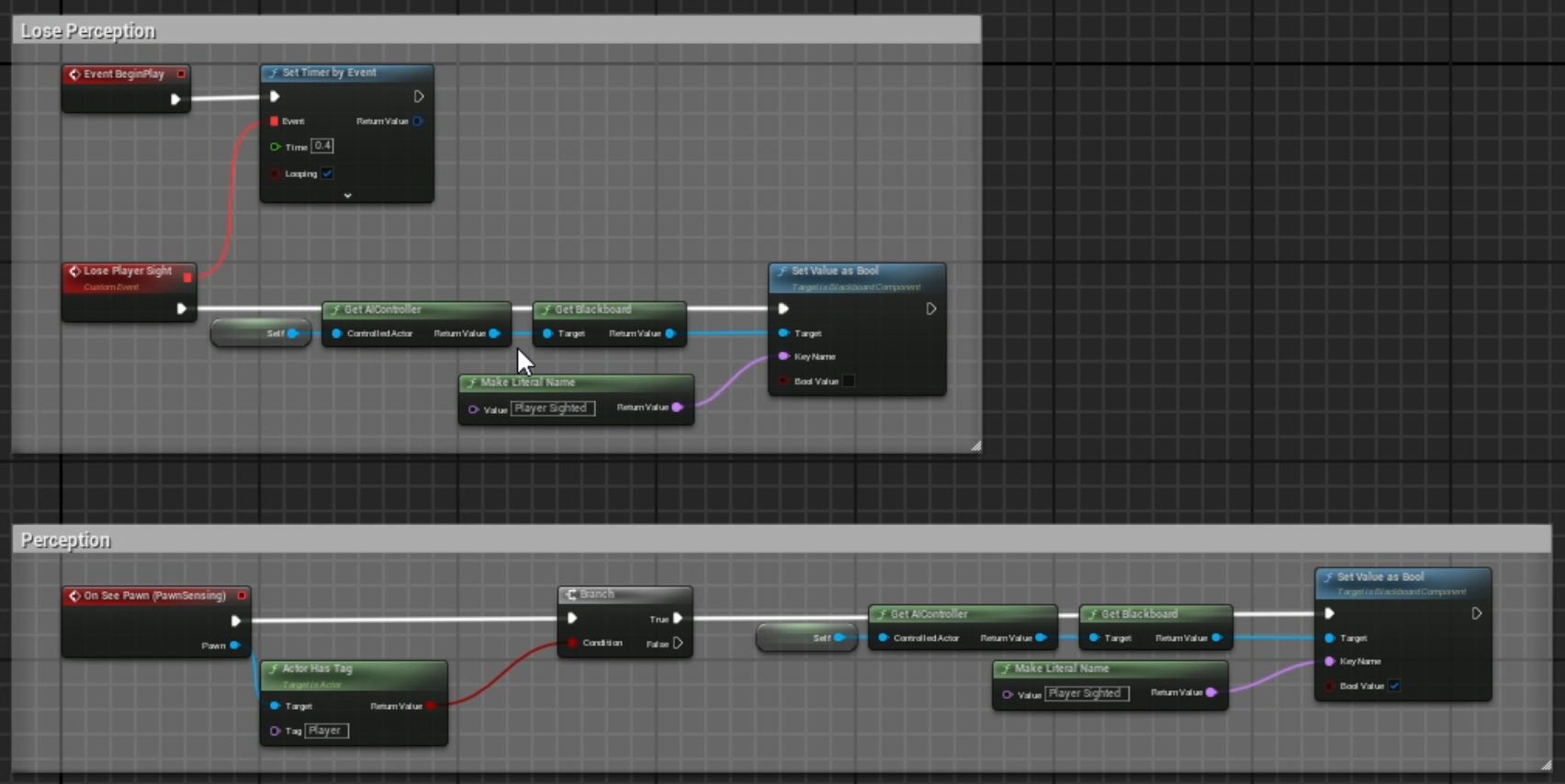
Developer:
Troy Ostboe Jr.
Objective:
To design and implement an advanced in-game AI system that enhances immersion, challenge, and engagement for players in a virtual environment.
Overview:
In this project, I spearheaded the development of an innovative in-game AI system designed to elevate the player experience in a virtual gaming environment. Leveraging cutting-edge techniques and technologies, I aimed to create AI entities that not only react intelligently to player actions but also exhibit behaviors that mimic human-like decision-making, creating a dynamic and immersive gameplay experience.
Approach:
My approach to this project involved a combination of research, experimentation, and iterative development. I began by studying existing AI systems in games across various genres, identifying strengths, weaknesses, and opportunities for innovation. Drawing inspiration from cognitive science, machine learning, and psychology, I developed a framework for an AI system that prioritized adaptability, responsiveness, and realism.
Requirements Gathering:
I worked diligently to understand the specific requirements and objectives for the AI system, including desired behaviors, interaction patterns, and technical constraints.
Architecture Design:
Based on the gathered requirements, I designed a modular and scalable architecture for the AI system, encompassing components such as perception, decision-making, action planning, and learning.
Implementation:
Using industry-standard programming languages and development tools, I implemented the AI system, focusing on efficiency, performance, and maintainability. I incorporated algorithms for pathfinding, state machines, behavior trees, and other AI techniques to enable intelligent decision-making and adaptive behaviors.
Testing and Iteration:
Throughout the development process, I conducted rigorous testing and iteration to fine-tune the AI behaviors, address bugs and edge cases, and ensure compatibility with the game's mechanics and design.

Adaptive Behavior:
The AI system is capable of adapting its behavior in real-time based on environmental cues, player actions, and changing game conditions, creating a dynamic and unpredictable gameplay experience.
Human-like Decision-Making:
Leveraging advanced decision-making algorithms and cognitive modeling techniques, the AI entities exhibit behaviors that mimic human-like reasoning and intuition, enhancing immersion and realism.
Dynamic Difficulty Adjustment:
The AI system includes mechanisms for dynamically adjusting the difficulty level based on player skill, providing a challenging yet rewarding experience for players of all skill levels.

The implementation of the in-game AI system has resulted in a significant enhancement of the overall gameplay experience, with players praising the realism, challenge, and immersion provided by the dynamic AI entities.
Designing and implementing the in-game AI system was a challenging yet rewarding endeavor that allowed me to showcase my expertise in artificial intelligence, game development, and user experience design. Through a combination of research, experimentation, and iterative development, I have created an AI system that not only enhances immersion and engagement but also pushes the boundaries of what is possible in interactive entertainment.